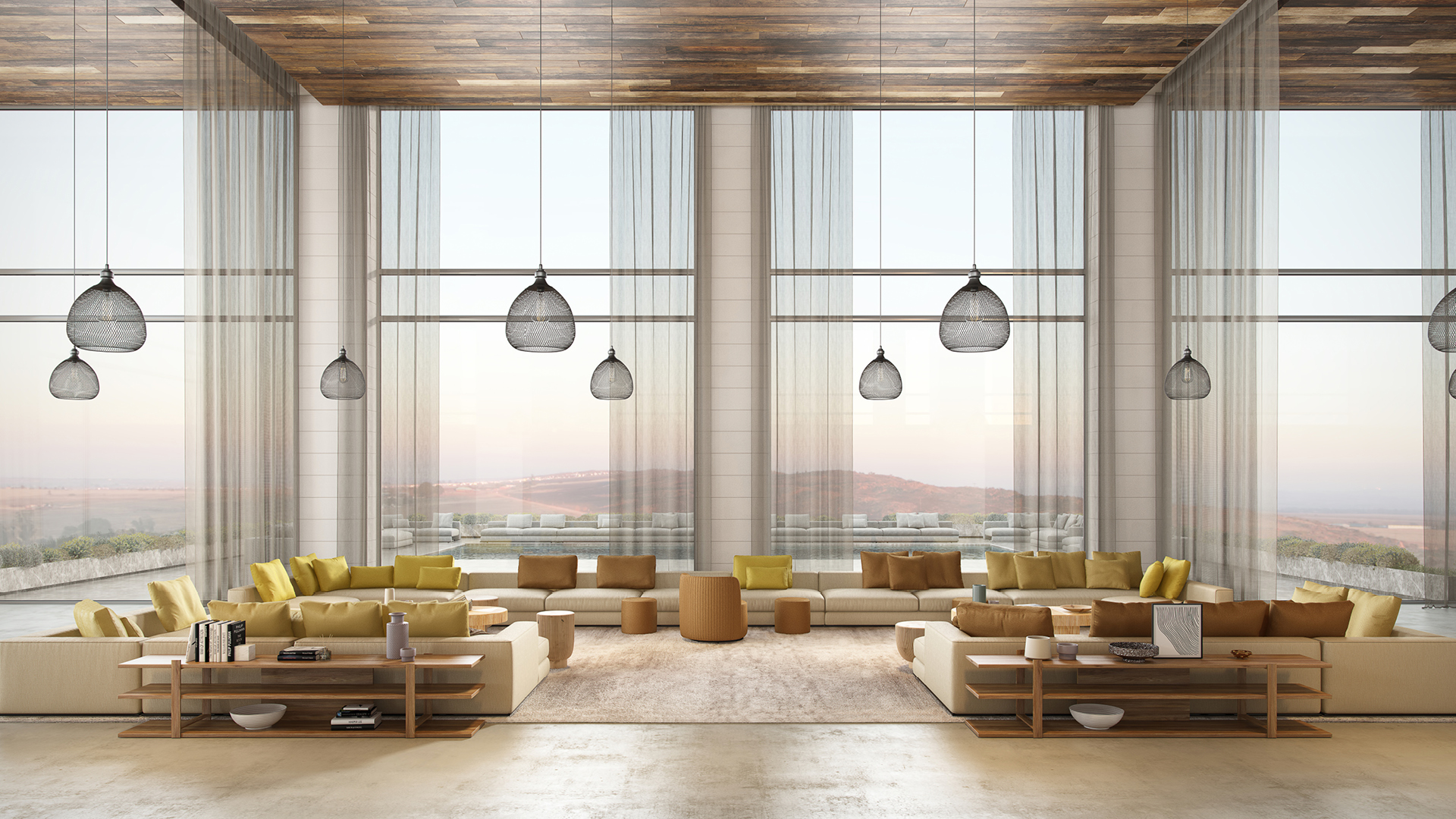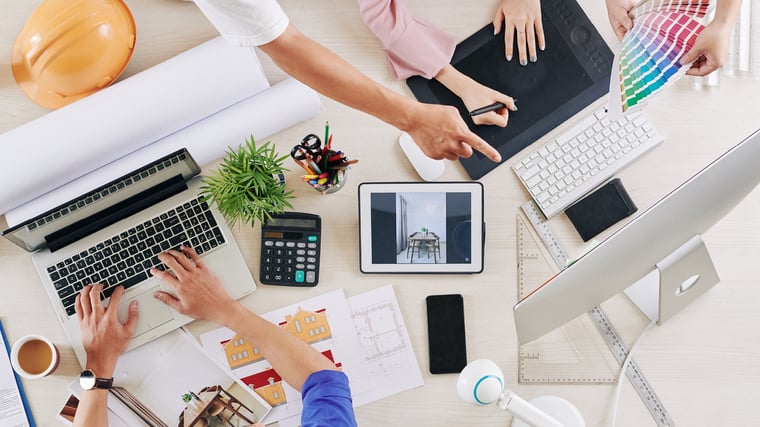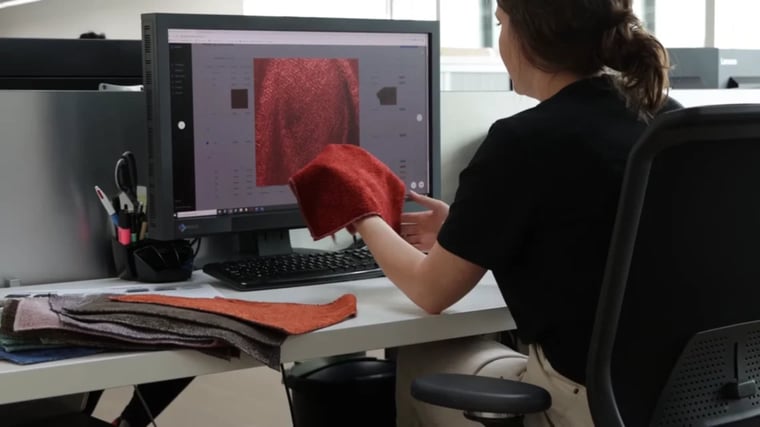
From concept to reality: 3D renders bring interior design to life
Published by Admin on
Sep 11, 2023 4:52:36 PM
Humans are curious by nature, and we like to see and know everything. For interior designers, this means being able to take their creative vision for spaces from their imagination and share it physically with their clients. Unfortunately, clients aren’t telepathic. What was once a challenge for interior designers has become an opportunity to collaborate, expand their design and truly meet the client’s needs thanks to 3D digital visualisation.
A 3D render is an image of a three-dimensional design layout. This is particularly useful for interior design, where furniture, drapery, accessories and other finishes can be included to give a realistic and clearly defined representation of the interior designer’s ideas. These images are computer generated, utilising digital assets such as Twinbru’s 3D fabric textures to represent products such as upholstery or drapery fabric selections accurately. While interior designers are incredibly talented, few have the capacity or technical expertise to create a 3D render on their own, and this is why partnerships between 3D designers and interior designers are flourishing.
Elevating design through collaboration
By joining forces, these professionals bring their respective expertise to the table, resulting in a powerful synergy. 3D designers possess the technical skills to create stunningly realistic and immersive renderings, breathing life into the interior spaces envisioned by interior designers. Their proficiency in using cutting-edge software and rendering techniques ensures that every detail is meticulously portrayed – from lighting and textures to material finishes and spatial arrangements.
In turn, interior designers contribute their deep understanding of design principles, functionality, and aesthetics, guiding the 3D designers to represent the intended atmosphere and style accurately. This collaboration not only facilitates effective communication between the design team and clients but also enables real-time adjustments, fostering a dynamic and iterative design process. As a result, the harmonious fusion of 3D expertise and interior design vision culminates in visually striking representations that empower clients to make informed decisions and bring their dream spaces to fruition with confidence.
Advantages of 3D renders for interior design
Everyone’s a winner when 3D design and interior design work together. The primary benefit of the collaboration is improved communication. Whether it’s a discussion between architects and interior designers or the interior designers and the clients, it’s much easier for everyone to explain their ideas or amendments with accompanying visuals. There is no mistaking what’s been asked for and no uncertainty about product selections.
Another advantage is the ability to test ideas or product selections. With a render, furniture and other elements are shown in the correct dimensions. Lighting can be adjusted for the location to assess how natural and artificial light will appear. Best of all, multiple 3D upholstery textures can be tried to see if they work together on particular furniture designs or how 3D curtain textures can fit the right installation type into the space. If something doesn’t fit, it doesn’t require any resources to change it in the 3D render and try something else. It’s also a chance to play and experiment with exciting options long before any physical work is done.
One big benefit of 3D design is the ability to work on a platform that allows for collaboration online. If the client is travelling or located away from the project, or if the 3D designer isn’t in the same city, there are amazing platforms that allow everyone to work together on a 3D design without the worry of distance.
See more benefits in our article on 3D visualisation for interior designers.
New normal for design
It’s becoming more commonplace for creative individuals to work together and combine the strengths of their respective fields to innovate. Just as Twinbru brought its expertise in fabrics and combined it with the expertise of 3D visualisation technology specialists to create 3D fabric textures, interior designers and 3D artists are seeing the reward of their collaborations.
What it means for both design and the industries associated with it is a great adoption of digital communication that will ultimately help open up industries, create new possibilities and lead to exciting projects that will have a positive impact in both physical and digital spaces.

Bring design to life
3D design does not only apply to interior decoration. There's plenty of scope for this type of synergy to be utilised in other areas. Whether it’s 3D designers working together to create inspiring new visuals or companies like James Dunlop Textiles working with Twinbru services to offer new visual assets, there is much to be gained from reaching out and forming partnerships between disciplines, companies and individuals.
